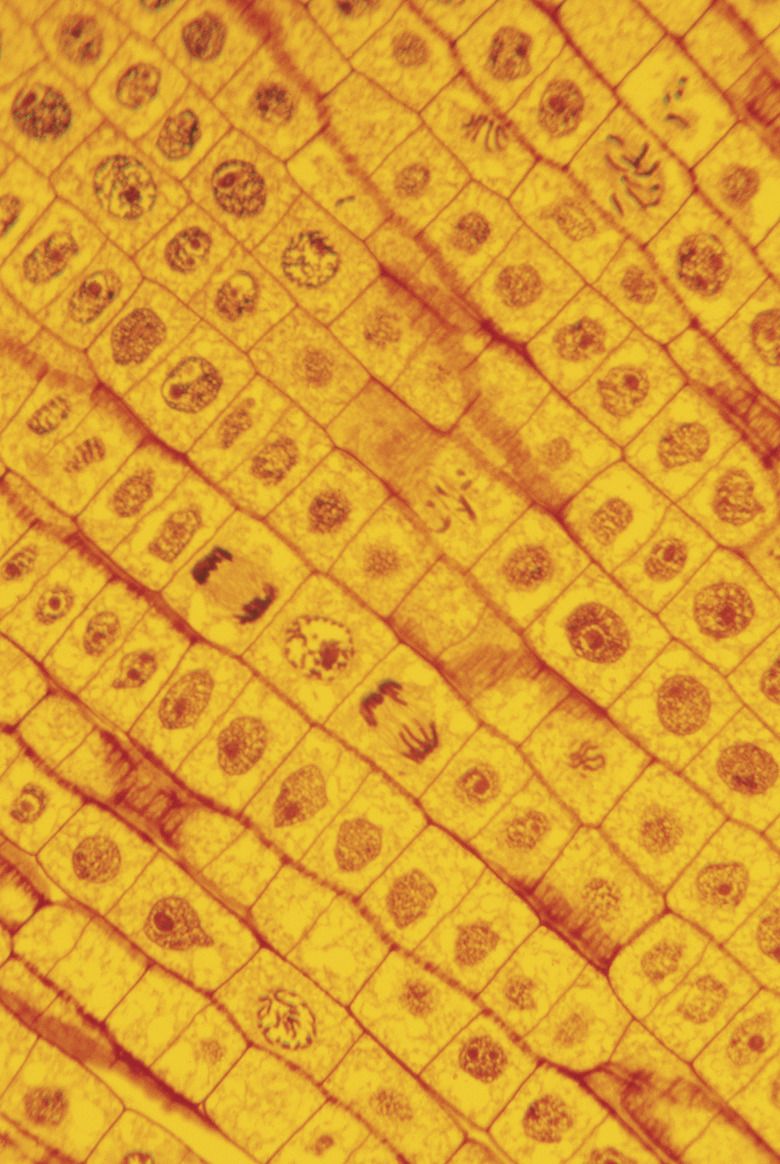What Are The Characteristics Of A Cell Undergoing Interphase?
When it comes to the cell cycle, mitosis gets all the glory. However, several steps occur during interphase that are crucial to the healthy replication of a cell during mitosis.
Interphase is the phase of a cell's life cycle that occurs before the phase of the cell cycle cytoplasmic division known as mitosis.
Interphase makes up approximately 90 to 95 percent of the span of total cell cycle time. Most human cells grow to double in size during interphase. The cell also replicates its DNA during this phase.
The subphases of interphase (in order) are G1, S and G2. G1 is the first gap phase, S phase represents the synthesis of new DNA and G2 phase refers to the second gap phase.
Do you know which phase occurs directly after G2? Yes, it's mitosis.
Interphase Characteristics
Interphase Characteristics
The most commonly known interphase characteristic is the lack of visibility of the chromosome. Chromosomes are not visible under light microscopy because their nuclear DNA is loosely arranged in chromatin fibers.
Fluorescence microscopy is another technique that better visualizes some of the features of interphase.
Interphase Subphases: G1
Interphase Subphases: G1
The first stage of interphase is the **first gap phase (G1)**. This name was given because the cell appears inactive under a microscope. However, several important changes are occurring at the biochemical level.
The cell size is growing. The cell is also acquiring proteins and energy needed for synthesizing chromosomal DNA.
G1 Checkpoint
G1 Checkpoint
A G1 checkpoint scans the cellular DNA for damage. This check is mediated by a gene called p53 located on chromosome 17. DNA damage elevates the level and activity of the protein products of the p53 gene.
P53 is called the tumor suppressor gene because a mutation in this gene's DNA is present in many cancer cells.
The G1 checkpoint is an important step because any DNA damage can be repaired before the error is replicated during the S phase. This is in contrast to DNA damage discovered at the G2 checkpoint. G2 checkpoint errors will be in two copies of the DNA because replication has already occurred.
Naturally, this creates more opportunity for an error in repair to occur since two errors must be fixed instead of only one detected at the G1 checkpoint.
S Phase
S Phase
DNA synthesis makes the S phase the longest subphase of interphase. The cell synthesizes two identical copies of its chromosomes, creating **sister chromatids.** These chromatids are joined together by a specific DNA sequence called a centromere.
The centrosome is one of several organelles copied during the S phase. **Centrosomes** each contain a pair of centrioles. Centrioles create the mitotic spindle that organizes chromosome movement during mitosis.
DNA content doubles at the end of the synthesis phase (n → 2n), but because the chromatids remain attached to each other via the centromere, the number of chromosomes stays the same.
G2 Phase
G2 Phase
After DNA synthesis is complete, the G2 phase or second gap phase begins. Again, this refers to the fact that chromosomes are not visible under the microscope. This phase is shorter than G1 and is also when cell growth resumes.
Proteins such as **microtubules** are produced. The cell also replenishes its energy stores in preparation for mitosis. The G2 checkpoint occurs.
G2 Checkpoint
G2 Checkpoint
The G2 checkpoint is a 'quality control' check for damaged DNA. Damage must be repaired before the cell can leave the G2 phase to enter mitosis. If the damage to the DNA is too severe, the cell will not be permitted to enter mitosis and instead will undergo a programmed cell death called apoptosis.
This checkpoint also searches for non-replicated DNA. If any portion of DNA that has not been copied is found, the cell is switched into a cycle arrest phase. The cell will remain in G2 until all DNA is copied.
Cite This Article
MLA
Mends, Francine. "What Are The Characteristics Of A Cell Undergoing Interphase?" sciencing.com, https://www.sciencing.com/characteristics-cell-undergoing-interphase-19644/. 10 June 2019.
APA
Mends, Francine. (2019, June 10). What Are The Characteristics Of A Cell Undergoing Interphase?. sciencing.com. Retrieved from https://www.sciencing.com/characteristics-cell-undergoing-interphase-19644/
Chicago
Mends, Francine. What Are The Characteristics Of A Cell Undergoing Interphase? last modified August 30, 2022. https://www.sciencing.com/characteristics-cell-undergoing-interphase-19644/
